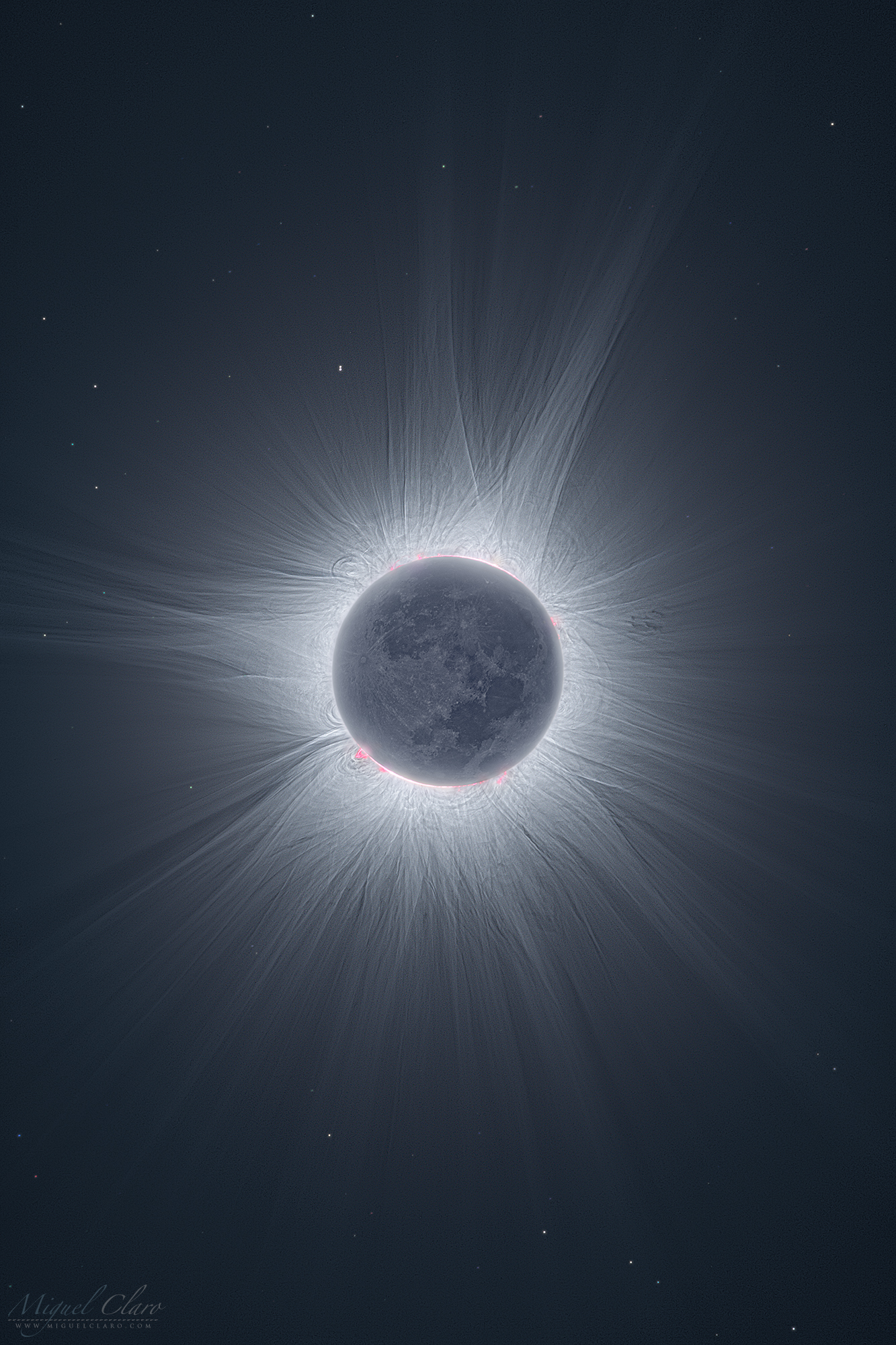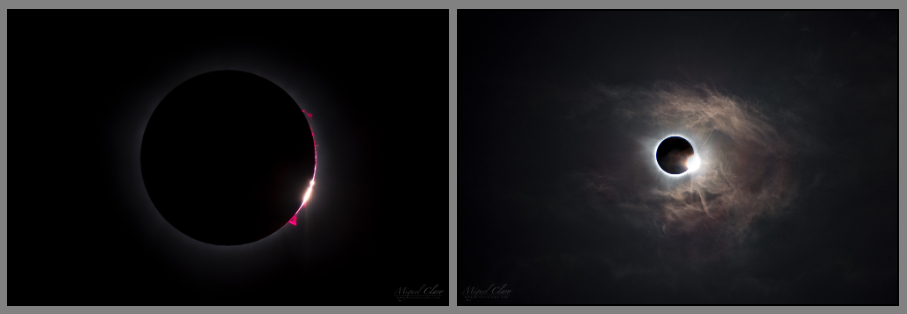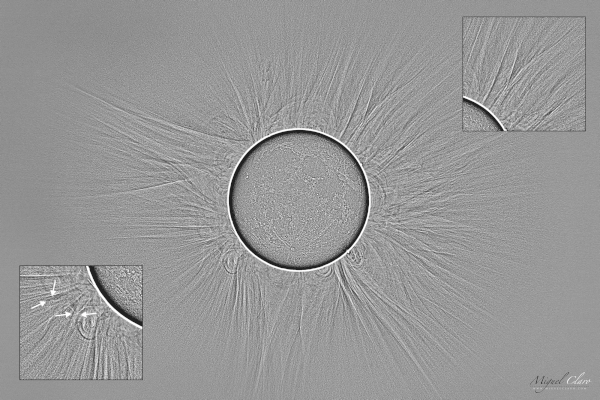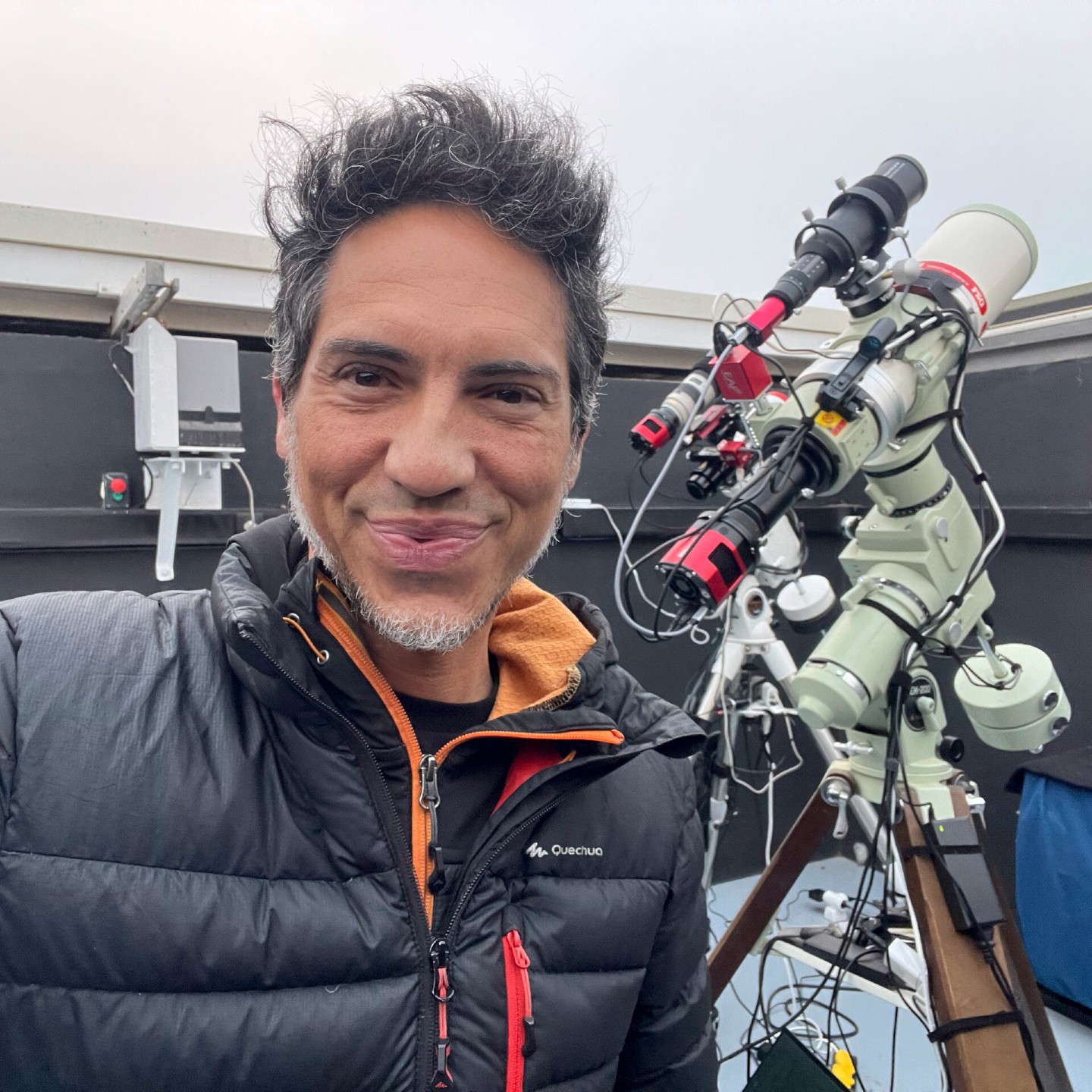See the sun's corona revealed in all its glory during 2024 total solar eclipse (photo)
Follow along step by step with astrophotographer Miguel Claro in this behind-the-scenes look at how such a mesmerizing solar photograph was made.
Miguel Claro is a professional photographer, author and science communicator based in Lisbon, Portugal, who creates spectacular images of the night sky. As a European Southern Observatory Photo Ambassador and member of The World At Night and the official astrophotographer of the Dark Sky Alqueva Reserve, he specializes in astronomical "Skyscapes" that connect both Earth and the night sky.
Behind the Trip, from Portugal to Texas
Taking a high resolution solar photograph during a total solar eclipse like this one represents an enormous amount of personal and professional effort, an incredible financial investment and months of planning.
This included planning the trip to ensure it was along the path of totality, booking accommodations several months in advance before prices went crazy, renting a car to be as mobile as possible — and all of it without knowing if the weather would cooperate on the location chosen for the special moment. We traveled from Portugal to Pearsall, Texas, as planned, but the forecast was indeed terrible for nearly the entire U.S., or at least where the path of totality was located.
So after many hours driving from Dallas to Houston and then to Pearsall, with the rest of the week monitoring with several different models the evolution of the weather forecast, we have decided – even with a certain risk – that we must need to move back to north, again, to be more close to Oklahoma state. So on the day before the Eclipse, we had to drive back to Dallas for five or six hours and in the morning of the Eclipse, we did an extra two hours drive, to reach a small city called Clarksville, in the northeast of Texas.
Related: 14 of the best total solar eclipse 2024 photos from our readers
At 10 a.m. the sky was still cloudy, and I only had two hours before the eclipse started, which meant I had to prepare my entire setup of six cameras with lenses, tripods, mounts, filters, cables etc ….
We found a nice green, calm farm to set everything up. The owner kindly authorized us to stay with our car nearby (thanks Ed!). This was the most stressful time of our lives, without knowing until the very end if we would be able to see the eclipse. As a photographer, focusing and centering the sun in between the clouds brought an extra difficulty to my task.
Breaking space news, the latest updates on rocket launches, skywatching events and more!
Additionally, I only had three solar filters for 6 cameras. Fortunately, like a miracle, just five minutes before totality started, the sky cleared up where the sun was located. During totality it was completely crystal clear, at least, for around 1 min and 30 seconds, calm and windless until the end. It was just magical!
Technical preparation and processing
My inspiration came from some of the finest images I've seen so far, from pioneering solar photographer Dr. Miloslav Druckmuller, and the incredible work of Nicolas Lefaudeux, as well as the notable results achieved by my friend Petr Horalek. Just a few months before the eclipse I started going deep, researching and studying the processes involved in those kinds of HDR eclipse images. I read some of the papers by Dr. Miloslav, many other articles, and I knew it would be a very hard task.
The image I'm presenting is the result of many hours of study and practice and a refined fusion of some of the techniques I've learned over the last years with some of you, so I'm thankful for that knowledge and want to show my deep appreciation for that. I think that learning is the most beautiful thing, after a total solar eclipse.
The sun's aura
The sun's corona is extremely hot and dynamic. Being the outermost layer of the sun's atmosphere, it reveals intricate fine structures of delicate details distorted by the strong magnetic fields. Especially close to the solar maximum expected for 2025 (the peak of the sun's 11 years cycle of activity), the plasma of the sun's corona features a lot of loops and wispy white streamers radiating into space. Due to the sun's brightness, it is only possible to see these when the moon is perfectly covering the sun during a solar eclipse.
And why is it so special? Because not even NASA's SOHO observatory in space can watch the inner corona of the sun in white light. It can only see the most outer part of the corona, using a coronagraph, from two solar distances away from the sun's center.
Why eclipse photography is so challenging
Photographing a Total Solar Eclipse, is probably to most advanced and complex task in all of astrophotography fields, not only from preparing and planning which requires a bit of Mat to find the correct set of exposures according to your gear combination, ISO, lens aperture, right place to be, right time to start etc, etc, as well as from executing it in a stressful short amount of time. But also very hard and difficult to process in a time consuming task.
First, because the Sun, the Moon and the stars have all different motions across the sky, which are evident in long focal distances and long exposures. Images must be aligned not on the Moon’s disc, not on the stars, and not even on the prominences (as it only works in shorter exposures), so to reveal the corona in full glory, images must be aligned on the coronal structures which are very hard and tricky, as they are faint, subtle and lacking of contrast, and they keep moving too on a lower speed. Noticeable though over the course of all bracketing, but inevitably negligible, for the final fusion in order to naturally reduce the presence of noise.
And probably the most difficult final achievement, is to keep as much as possible, everything looking natural without overcooking it. It is a delicate balance between, contrast, light flow, color and detail which I tried to keep in mind and respect until the very end. I hope I did it!
Equipment and Exposures
The High Resolution image was captured with a Sigma lens at 600mm at f6.3, and a Nikon D850 modified (Ha sensitive – not relevant for this type of TSE images) on a Vixen portable mount. I took more than 163 photos (bracketed exposures), but I selected only 72 images (8 bracketed sequences of 9 shots each) from these to process, where the sky was crystal clear without any high cloud visible.
The exposure time for each sequence bracketing was ranging from 1/125s, 1/60s, 1/30s, 1/15s, 1/8s, 1/4, 1/2s, 1s, 2s at ISO100, plus additional fast exposures of 1/4000 for C2 and C3 (Prominences and Baily’s Beads). 93GB of images were acquired just for this setup, being 1446 calibration frames such as flats, darks and bias (in a total of 65GB). Images used were captured during 1 minute and 28 seconds of the 4 minutes and 19 seconds of totality as seen from my location in Clarksville, Texas.
Contacts C2 and C3
I merged the images from contact C2 and C3 in a single final photo to reveal the best of all prominences visible around the sun's limb. This allowed me to show the solar prominences and their associated magnetic loops on the final HDR image.
Earthshine
Normally well seen one or two days after the new moon, the earthshine phenomenon was described and illustrated for the first time by the great Leonardo Da Vinci about 500 years ago. da Vinci explained the phenomenon known as Earthshine in the early 16th century, when he realized that both Earth and the moon reflect sunlight at the same time. Light is reflected from the Earth to the moon and then back to the Earth as Earthshine.
During totality, the moon is in front of the sun and can be seen in a long exposure. Indeed, it's the only moment when it is possible to capture the full disk of the moon during the new moon phase. I was gladly surprised with the level of detail that could be seen, after a stack of the exposures combined together, comprising a total amount of 28 seconds of photography. The level of detail was then enhanced using a Local Histogram Equalization with a large scale. Again, it is interesting to show that a stack aligned on the moon reveals the trails of background stars as the moon is moving much more faster than sidereal (the apparent motion of the stars relative to Earth's rotation), and solar motion.
The image on the left below shows the moon's disc after the 28s stack, and before any further detail enhancement. Startrails are shown on the right image as the result of the stack.
Background stars up to 10.8 mag
The stack of the long exposures aligned on the stars comprises a total amount of 28 seconds too, and can reveal stars down to magnitude 10.8 (the lower the magnitude, the brighter an object is). Interesting to note that the brightest star visible close to the left side of the moon is actually a variable double star in Pisces named Zeta Piscium (86 Psc).
Coronal motion on finest structures
Loops in the inner corona normally move slowly and tend to not reveal obvious motion in such a short amount of time (88 seconds), but streamers and small scale features seems to reveals some noticeable movement in the background.
Some of the most interesting features that my eyes could make out are highlighted with arrows at the lower left corner, showing what seems to be a displacement of a small scale structure. Besides the moon's evident motion, is also possible to notice some subtle radial motion on large scale features, visible in the background.
Each of the successive nine exposures set of images was aligned and processed independently to get 8 successive final composites of the solar corona captured from Clarcksville, Texas, US, during totality on April 8, 2024 with a 600mm lens f/6.3 on a Nikon D850.
Acknowledgments
To produce a photo like this required an investment easily equivalent to the amount of a small entry level car, so fortunately, I had the extra support of some good friends that helped to make this possible. They know who are and their place in our thankful hearts.
This image is dedicated to them, but specially to my dear partner Apolónia. She not only planned every detail of the travel and ground trip alone when I was immersed in planning the technical stuff — gears, cameras, lens etc — but she also helped overcome all the single obstacles in our way that we faced since last year that almost made me give up of making this expensive trip to the 2024 total solar eclipse.
Last but not the least, to our lovely sun, for being just mesmerizingly beautiful and for appearing in between the clouds for long enough to make every drop of sweat count!
Fine Art Prints
I hope you enjoy it as much as I do, and if you want to support my work as an independent artist, you can buy this image as a print and a piece of art or a wall decor for your sweet home! Explore the size options and different types below or contact me if you need further assistance. I'm planning to create a future limited edition Print Drop which will be available on my Print gallery. Meanwhile, you can sign-up my newsletter to get early access.
Miguel Claro is a professional photographer, author and science communicator based in Lisbon, Portugal, who creates spectacular images of the night sky. As a European Southern Observatory photo ambassador, a member of The World At Night and the official astrophotographer of the Dark Sky Alqueva Reserve, he specializes in astronomical skyscapes that connect Earth and the night sky.







